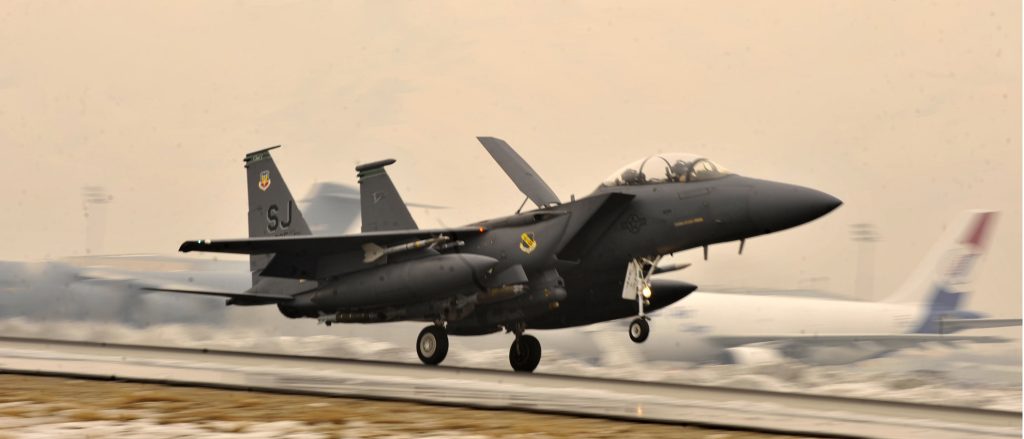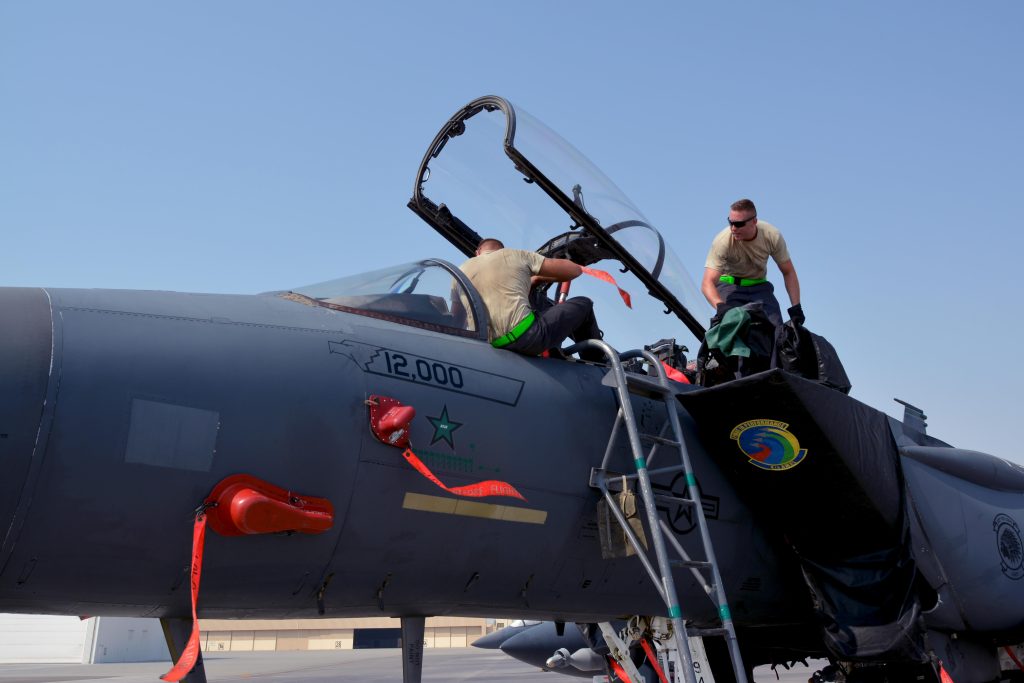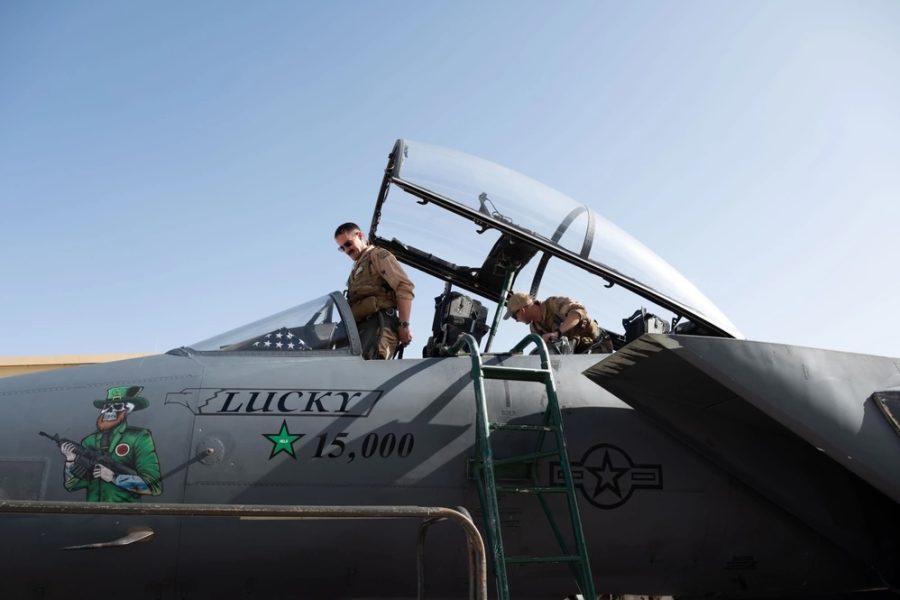One year, eight months, two weeks, two days, 16 hours. That is how much time F-15E tail number #89-0487 has spent in flight since it first entered service in 1989. The 35-year-old fighter jet logged its 15,000th flight hour in May during a combat sortie while deployed to the Middle East, according to a press release published July 9.
The milestone is largely a tribute to the maintainers who shepherded the aircraft nearly twice the length of its original service life of about 8,000 flight hours.
“Lots of maintenance, long hours, and many upgrades are needed to ensure jets are ready at a moment’s notice,” one anonymous maintainer said in the release. “Literal blood, sweat and tears went into achieving this milestone.”
A spokesperson for Air Force Life Cycle Management Center confirmed for Air & Space Forces Magazine that tail number #89-0487, also known as “LUCKY” has more flight hours than any of the other 217 Strike Eagles in service. As one Airman cited in the press release said, the milestone “is unheard of.”
“All of the crew chiefs, both past and present, paved the way for the standard needed to maintain this jet,” the Airman said. “There are people all over the world who know her story and constantly ask me about how it’s doing.”

LUCKY’s achievement comes 12 years after it became the first F-15 of any type to break 10,000 hours, according to a 2012 press release. At the time, the jet was flying a packed schedule of combat sorties out of Bagram airfield, Afghanistan.
“When we got here, it was at 8,800 hours,” Staff Sgt. Ryan Forsse, a crew chief assigned to #487, said at the time. “We put 1,200 hours on it in the past three months. During that time, this aircraft dropped 15 percent of all bombs deployed in our fleet.”
But LUCKY’s habit of trailblazing goes back even further to 1991 when, during Operation Desert Storm, #487 became the first Strike Eagle to record an air-to-air combat kill after Capts. Tim Bennett and Dan Bakke dropped a laser-guided bomb on an Iraqi Mi-24 helicopter. The crew thought the helicopter was on the ground when they released the weapon, but it had actually reached about 800 to 1,000 feet by the time it impacted, Bakke and Bennett said in the book “Strike Eagle: Flying the F-15E in the Gulf War.”
“If you’ve ever seen a James Bond movie where the helicopter—the model they film—just vaporizes and disappears, that is exactly what happened,” Bakke recalled.
LUCKY, also known as ‘America’s Jet,’ seems to have a knack for being a fighter jet, the lead production superintendent for the 380th Expeditionary Aircraft Maintenance squadron said in 2016, after the jet surpassed 12,000 flying hours.
“All of our aircraft have different temperaments, so to speak, but America’s Jet consistently outperforms all of our other jets,” the superintendent said. “That’s why we call her America’s Jet; because she is full of grit and fortitude, the embodiment of the American spirit, and has demonstrated this in every major conflict since Desert Storm.”

The rest of the F-15E fleet likely isn’t too far behind LUCKY: in July 2023, 53 Strike Eagles had achieved the 10,000 flight hour mark, according to the 48th Fighter Wing based at Royal Air Force Lakenheath, United Kingdom. The past year has been a busy one for the Strike fleet, which has deployed multiple times in response to growing tensions in the Middle East.
In April, F-15Es from the Lakenheath-based 494th Fighter Squadron and the Seymour Johnson-based 335th Fighter Squadron shot down more than 70 Iranian drones before they could reach targets in Israel. President Joe Biden spoke with members of the F-15 squadrons to “commend them for their exceptional airmanship and skill in defending Israel from an unprecedented aerial attack by Iran,” the White House said at the time.
Though it was not immediately clear if LUCKY took part in that mission, the jet may have many flight hours ahead to achieve more historic firsts. In May, Rep. Mike Rogers (R-Ala.), a key member of the House Armed Services Committee, proposed blocking the Air Force’s plan to retire any Strike Eagles in the foreseeable future. The Air Force had asked to retire 26 jets next year as the start of a gradual draw down.

In the meantime, the Air Force hopes to gradually replace the older F-15C model with the new F-15EX variant, but the exact size of the future EX fleet remains unclear. Until then, the F-15E likely will continue serving as the Air Force’s heavyweight multirole air-to-air and air-to-ground fighter of choice. While pilots will fly the jet, maintainers will keep it ready to fly. After all, LUCKY may have spent nearly two years in flight, but most of its 33 years were on the ground being prepared for the next sortie.
“LUCKY has been an honor to crew,” said the anonymous maintenance Airman.
